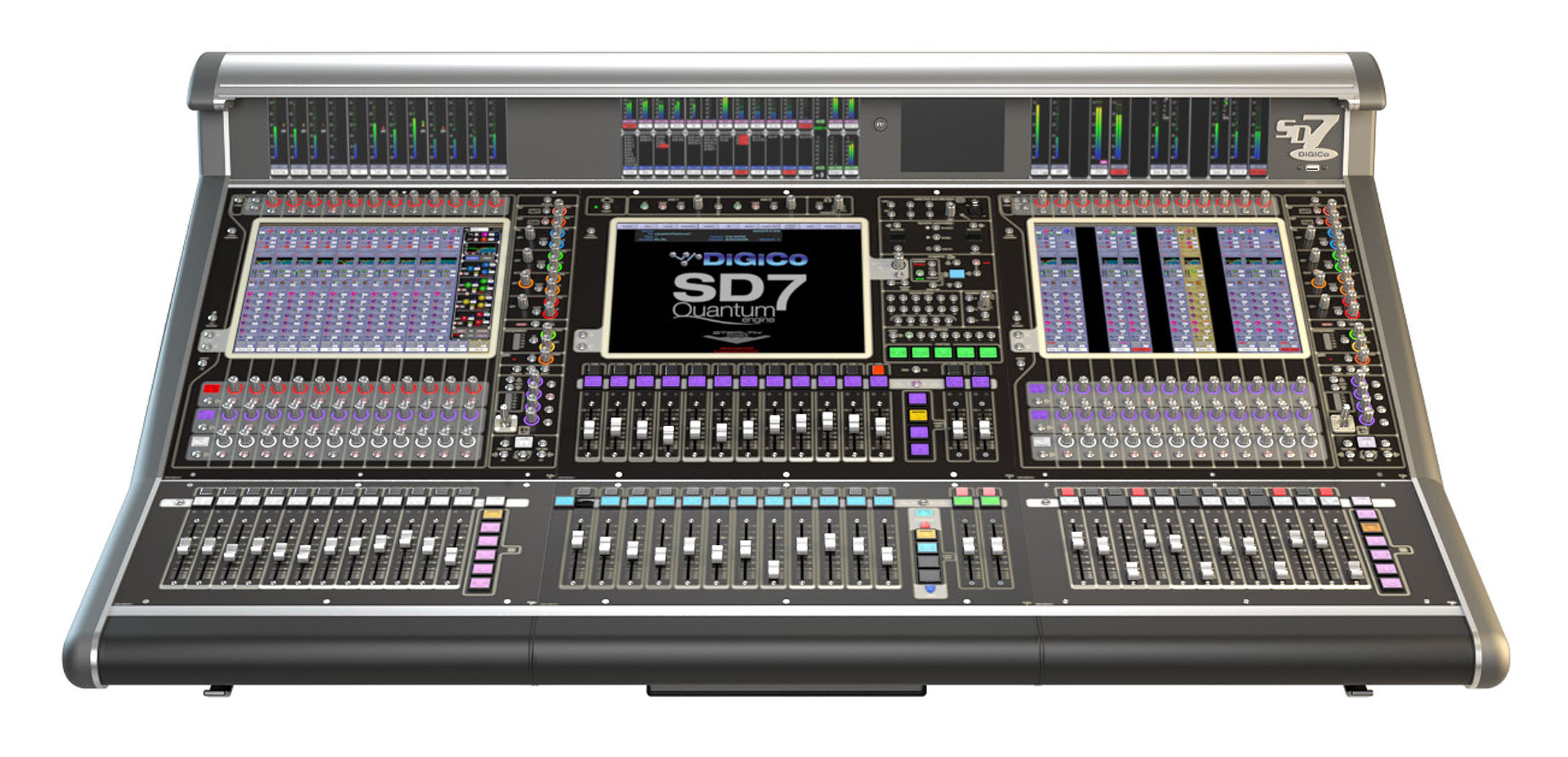Developed with seventh-generation Super FPGA devices that further increase audio processing power, Quantum expands DiGiCo’s flagship SD7 to a massive 688 channels of processing in 96kHz operation that can be connected in the outside world to thousands of potential I/Os. The engine is also equipped with eight newly-assignable MADI connections and two DMI slots (DiGiCo Multi-Channel Interface) to accommodate the growing family of card options. Nodal Processing and True Solo further join the list of powerful new enhancements.
- The patented Nodal Processing appreciates the demands on monitor engineers and sound designers to be able to provide creativity not only on the channels but actually on each node of an aux buss. A full complement of processing can be allocated to the send allowing a unique mix tailored for the artist or the audience.
- True Solo allows the operator’s monitoring system to replicate almost any section of the console, and how that source is being processed and heard. This saves time and speeds up the process of managing the potentially daunting number of channels and busses available to the user.
- An arm processor handles all the communications between the host PC and the FPGA core; it’s the translator that communicates all the work surface flow to the core processor. Plus there are now three fourth-generation SHARCS controlling the interpolation algorithms in the FPGA to produce that warm analog feel, which will make a significant difference to any engineer.
- Standard channel processing, whether inputs or outputs, includes Channel Delay, DiGiTuBe, Single and Multi Channel Presets, Dual insert points, Hi- and Lo-pass filters @ 24dB/octave, four-band parametric EQ (eight on outputs) with band curve selection and Dynamic EQ on each band, DiGiCo’s DYN 1 (Compressor, De-esser or Multi Channel Compressor) and DYN 2 (Gate, Compressor or Ducker).
- The master section incorporates 48 gangable 48-band graphic EQs, 48 stereo effects, and 36 control groups (VCAs); and using snapshots, engineers can now switch between complete configurations in any live environment easier than ever before, be it at rehearsals, during system setup, or even at a show.
- 128 busses are included, all of which are assignable as mono/stereo groups or auxiliary busses; and in addition to these busses, for further configurability, DiGiCo has provided a 48 x 48 output matrix, dual solo busses with True Solo, and a LR/LCR/5.1 Master buss. Essentially, users have the equivalent of 190 busses of DSP at their disposal. And, unlike all other digital console manufacturers, you don’t lose Aux or Group Busses when using the Matrix as they are in addition, including the Master buss.
- New GTX ports have been introduced, running at 6.6GHz, with multiple 6.6GHz links between, interconnected with pairs of wires; and each pair of wires can transport up to 2,000 channels at 96kHz. With just two wires as a differential pair, rather than using parallel ports, the data speed is phenomenal.
- A wide range of connectivity choices are provided, including local I/O (12 analog inputs, 12 analog outputs, and 12 AES mono I/O), Optocore (one fiber loop offering 504 audio channels is standard, but greatly expandable), UBMADI (connect any laptop via USB for 48 channels of recording), DMI (many different protocols are supported, and the list is growing), and Waves (for SoundGrid processing, with up to 64 channels).



